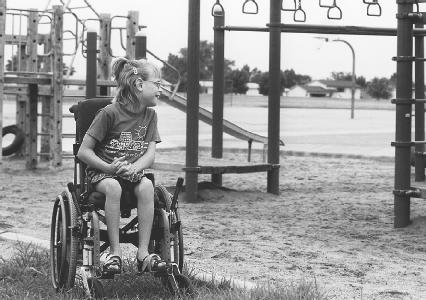Cerebral Palsy - Causes
Cerebral palsy is caused by damage to brain cells that control the movement of muscles. When those cells die, signals can no longer be sent to muscle cells. This loss of muscle control results in the symptoms of CP.
A number of factors can cause brain cell damage. These include lack of oxygen (asphyxia, pronounced az-FIK-see-uh), infection, trauma (shock), malnutrition (poor diet), drugs or other chemicals, or hemorrhage (bursting of blood vessels). In most cases, it is impossible to discover the exact cause for any one person's CP. Premature birth is regarded as one important and common factor. Most researchers now believe that brain cell damage occurs before birth. This damage is also responsible for other conditions that tend to occur along with CP.
- Ataxia:
- A condition in which balance and coordination are impaired.
- Athetonia:
- A condition marked by slow, twisting, involuntary muscle movements.
- Attention-deficit/Hyperactivity Disorder:
- A behavior disorder marked by inattentiveness, a high level of activity, and impulsive behavior.
- Contracture:
- Shortening of a muscle.
- Diplegia:
- Paralysis of the arm and leg on one side of the body.
- Dystonia:
- Loss of the ability to control detailed muscle movement.
- Hemiplegia:
- Paralysis of one side of the body.
- Hypotonia:
- A condition in which muscles become floppy and lacking in strength.
- Quadriplegia:
- Paralysis of both arms and both legs.
- Spastic:
- A condition in which muscles are rigid, posture may be abnormal, and control of muscles may be impaired.
Asphyxia may occur as the result of various problems. First, the circulatory system may not develop normally prior to birth. Asphyxia may occur during the birth process, however asphyxia at birth usually indicates that the newborn has other neurological problems. Asphyxia after birth can be caused by choking, exposure to poisons (such as carbon monoxide), or near drowning.
A child's brain may also be damaged prior to birth by infections acquired by the mother. These infections include rubella (German measles; see rubella entry), toxoplasmosis (a blood infection), cytomegalovirus (a virus that causes herpes; pronounced SIE-tuh-MEG-uh-lo-VIE-rus), and HIV (the virus that causes AIDS; see AIDS entry). Two kinds of brain infection, encephalitis (see encephalitis entry) and meningitis (see meningitis entry), can also cause CP in infants.
Physical trauma (shock) to the pregnant mother or fetus may cause brain damage leading to CP. Trauma can be caused by a car accident, violent shaking, or physical abuse. Malnutrition and drug use by the mother can also cause brain damage.

Differences in certain blood factors (Rh factors) between mother and child was once a major cause of one form of CP. Today these differences can be detected by tests and a pregnant woman can be treated to prevent damage to her child.

Comment about this article, ask questions, or add new information about this topic: